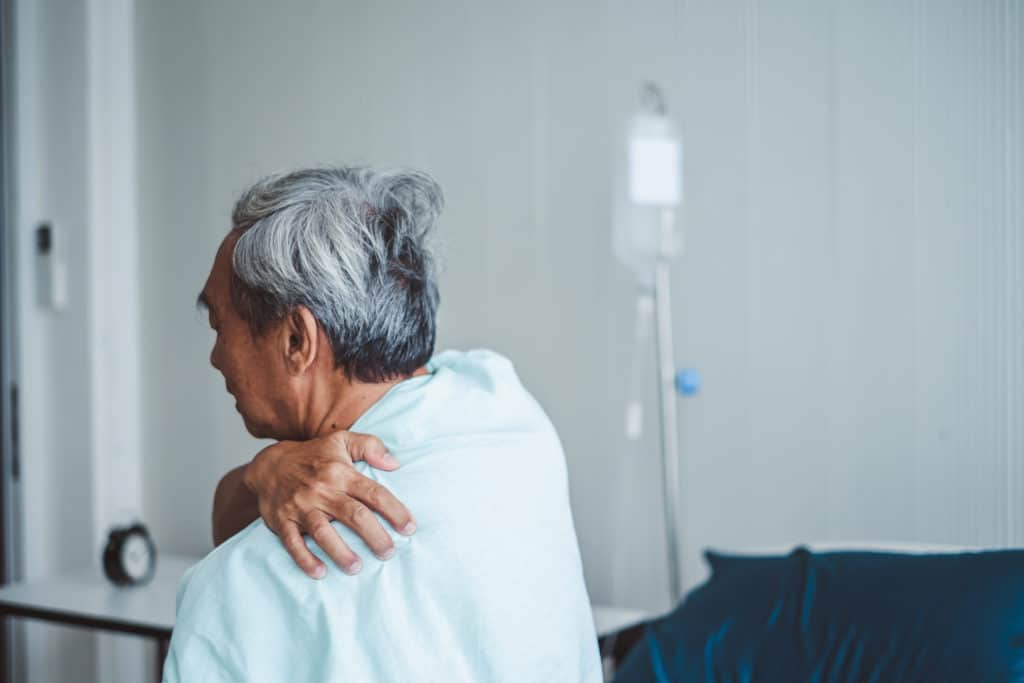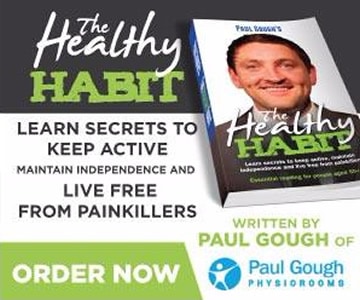
At Paul Gough Physio Rooms many of our patients are surprised to hear about how easy it can be to pull a muscle… especially when you do something as simple as sneezing!
Have you ever pulled a muscle?
Chances are you have… and when you do, believe me, you’ll know about it!
Most people, including myself, don’t realise how detrimental pulling a muscle could be to our everyday lives.
In this blog post, you’ll discover just some of the ways you can pull a muscle… including how easy it is to pull a muscle and how to help yourself relieve the excruciating pain.
Sneezing, turning your neck suddenly, sleeping in an awkward position, moving to pick something up or even reaching for something that’s tricky to get to – are just a few of the things you can do every day to pull a muscle.
So... What Actually Happens When You Pull a Muscle?
Pulling a muscle is something I’m sure we’ve all done before… whether we’re done it badly and it’s stopped us from doing the things we love, or we’ve had a mild sprain and suffered some discomfort for a couple of hours.
When you pull a muscle, the pain can range from mild, like a minor neck strain you get from turning your head the wrong way, or the pain can be severe like a lower back injury that leaves you unable to walk for days.
You might experience a sudden onset of pain, soreness, bruising, stiffness, swelling and many more.
Pulling a muscle is often the term for something called a “grade 1 strain”, which is when you tear about 5% of the fibers in your muscle… causing the uncomfortable twinge we all know and hate.
Sounds scary… doesn’t it?
It doesn’t have to be, especially when you know how to help yourself.
Can I Pull A Muscle From Sneezing?
Believe it or not – yes.
I remember a few years ago, the week before my birthday, I sneezed and pulled a muscle in my lower back. I was in so much pain and completely unable to walk; I had to use my office chair with wheels to support me when I was moving around my home.
Don’t get me wrong, my family was very amused… but as embarrassing as it was, putting my back ‘out’ from sneezing makes total sense.
Sneezing is a forced, sudden and uncontrolled movement that my body simply was not prepared for. It’s this kind of sudden movement that often results in a pulled or strained muscle, because the body is forced into an action that it’s not ready for.
Whiplash Can Be a Great Example of Pulling your Back
The sudden rapid back and forth movement of the neck causes strain to the neck muscles, leaving you feeling achy, and your neck too painful to turn properly.
At the clinic, we typically see whiplash in patients after they’ve been in a car accident.
But I was not surprised to see a patient who walked into the clinic with a badly strained leg after playing football with his grandkids – his muscles weren’t prepared and warmed up properly, so the sudden quick movement of kicking the ball came as a shock to his body, straining the muscle in his leg.
Believe it or not, you don’t have to be a weightlifter or carrying anything heavy to pull a muscle.
Download our FREE Back Pain Guide… it’s filled with our top tips and tricks to help you help yourself at home.
What Do I Do When I Pull a Muscle?
Helping to heal a pulled muscle is different for everyone because we all have different severities and different healing times.
If the muscle pain is severe – the kind that really does stop you from walking, or turning your neck at all… then you should see someone. Do not mess around with severe injuries and try to treat them at home yourself, or it might last even longer!
The advice that I’m about to give you is for mild muscle strain – the kind where you can still move, and you know you’ve done something wrong. As always, use your best judgement – go and seek help if you have any doubts whatsoever.
What is the RICE recovery method?
I’m going to break this down so you know what to do at all stages when you’ve pulled a muscle so you can get back to being 100% as soon as possible.
As soon as you know you’ve pulled a muscle – I highly recommend you use the tried and tested ‘RICE’ method.
This is a treatment that’s recommended to do within the first 24 hours of you pulling a muscle, and it can be a great way to help yourself.
Rest
This might be obvious.
The first thing you need to do is stop whatever it is you did that pulled your muscle in the first place. I can’t tell you how many times I’ve seen people injure themselves (especially during exercise) and decide to just go ahead and push through the pain…
Pushing through the pain is something that is guaranteed to make any injury worse.
Ice
A question I get asked a lot is ‘when do I use ice and when do I use heat?’
The sooner you apply ice, the better!
Ice provides pain relief and helps minimise swelling, which is the primary purpose of ice.
It’s best to think of ice as a pain-reliever.
Do not apply ice directly to the skin, unless you want to deal with cold burns alongside a pulled muscle! Wrap this in a tea towel and then apply to the area.
Compression
Apply a soft bandage to the area to help support the pulled muscle and reduce the overall swelling, but make sure not to wrap the area so tightly that you restrict blood flow to the area.
Use your judgement of what tight is too tight for your body!
Elevation
Whenever possible try and keep the injured muscle elevated, above the level of your heart when you can.
You can use pillows to help raise the pain point whilst you rest.
As a general rule, after doing the RICE method for a day, try and get moving as soon as possible the following day. I’m only talking about gentle movements that do not cause pain.
If anything causes pain – stop this immediately and continue with the RICE method.
How Can I Prevent Pulling a Muscle?
You don’t always need to rush off to a pharmacy and buy the ‘magic cure’ to rub on muscles or take painkillers, there is almost always a natural solution out there waiting for you to try.
Although the RICE method is not a guaranteed fix… it’s proven to help ease the pain and is a good place to start.
But preventing injuries such as pulled muscles is a lot easier than you may think.
Stay Hydrated
By staying hydrated, you’re reducing the risk of cramp (which does cause muscle sprain) and you’re also looking after your blood sugar levels which can stop you feeling light-headed and dizzy!
By staying hydrated, you’re helping both your muscles and other aspects of your health.
Warm Up Properly
One vital thing you can do to prepare yourself for any kind of activity (it doesn’t have to just be exercise) can be to stretch…
Some simple warm up exercises can help elasticate the muscles and prevent further injury.
Pace Yourself
The last thing that you want to do is injure yourself… so remember not to do too much at once and listen to your body.
Whether you’re lifting something heavy, weightlifting or simply playing with the kids and grandkids, too much of something is definitely not always a good thing.
Move
You can’t stretch your muscles without moving…
Like I said further up, muscle strain is caused when your body is not prepared for a sudden movement.
Try to build up your exercise and activity levels as weeks progress, this will allow you to build strength in your muscles and prevent things like muscle cramps, tension and aches.
Try to get into good, healthy habits as soon as possible – starting today.
In fact, you’ve picked one up already by reading this blog! In doing so, you’re going to give yourself the best chance of being active, happy, and healthy.
We’re Here To Help…
If you’re in pain and would like to talk to us about getting some help, some specialist advice, or if you are looking for a diagnosis, remember we are always here to help you.
We are safely offering both face-to-face and virtual appointments.
If you would like to get one of our limited slots, please click here to complete our enquiry form or CALL us on 01429 866771.
P.S. Do you know someone with aches in their knees, hips, or a really stiff lower back?
Who do you know that is always telling you about their aches and pains? We would love to help them live a pain free life too.
That person could be someone who you live with, work with, or an extended friend or family member, who is maybe suffering with some kind of ache or pain that we can fix. It might even be someone you enjoy to cycle with.
Even better, if you refer someone to come and see us at the clinic, you’ll be entered into our ‘Referral for Rewards’ prize draw, to say a huge thank you.
For more expert advice, read our other blogs or check out our YouTube channel:
Read Our Blog – 3 ‘Quick Fixes’ You THINK Help Knee Pain – But Don’t
Read Our Blog – 3 Simple Steps to Become More Flexible and Move Freely
Read Our Blog – Why Winter Can Make Your Aches Feel Worse
Visit Our Paul Gough Physio Rooms YouTube Channel

